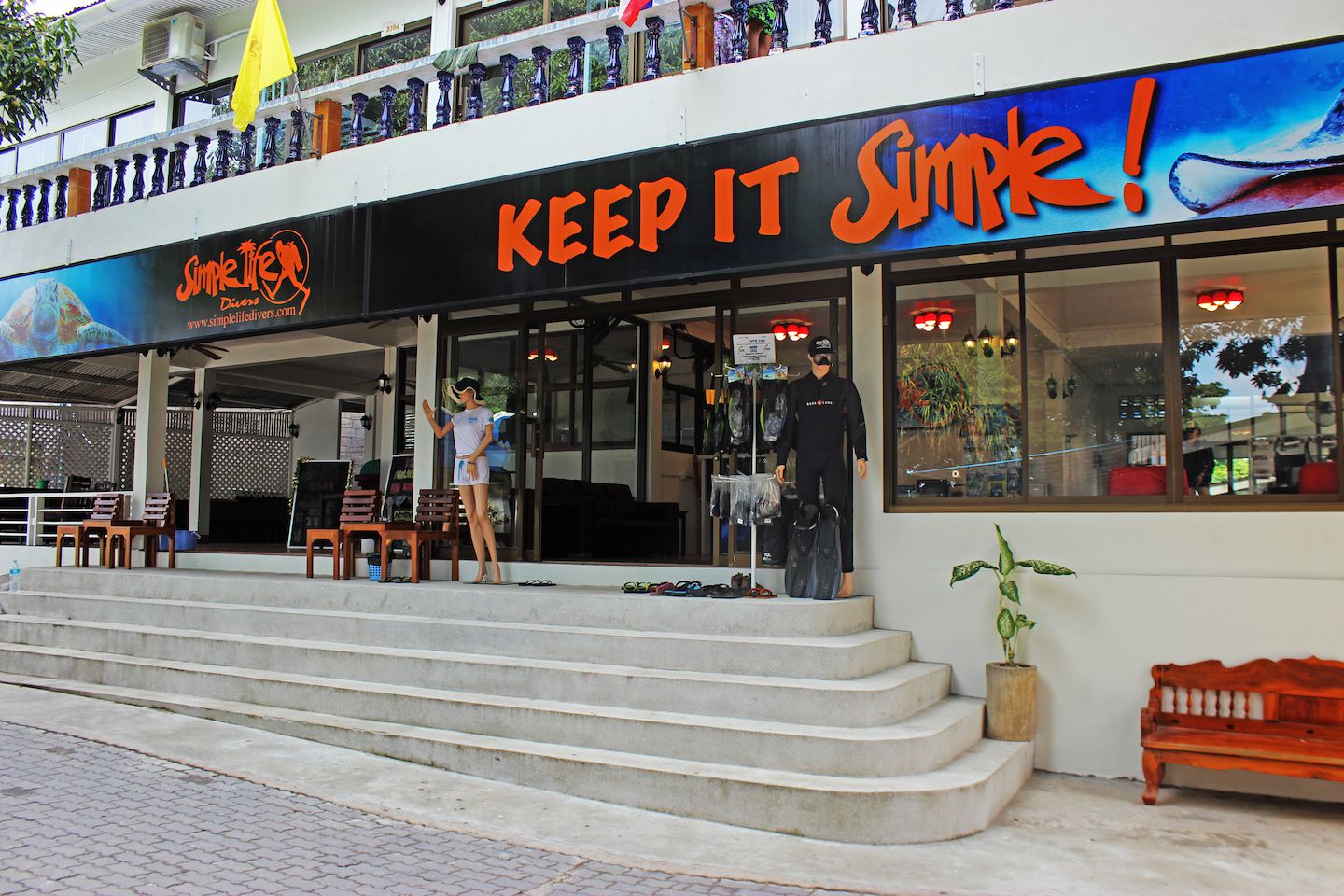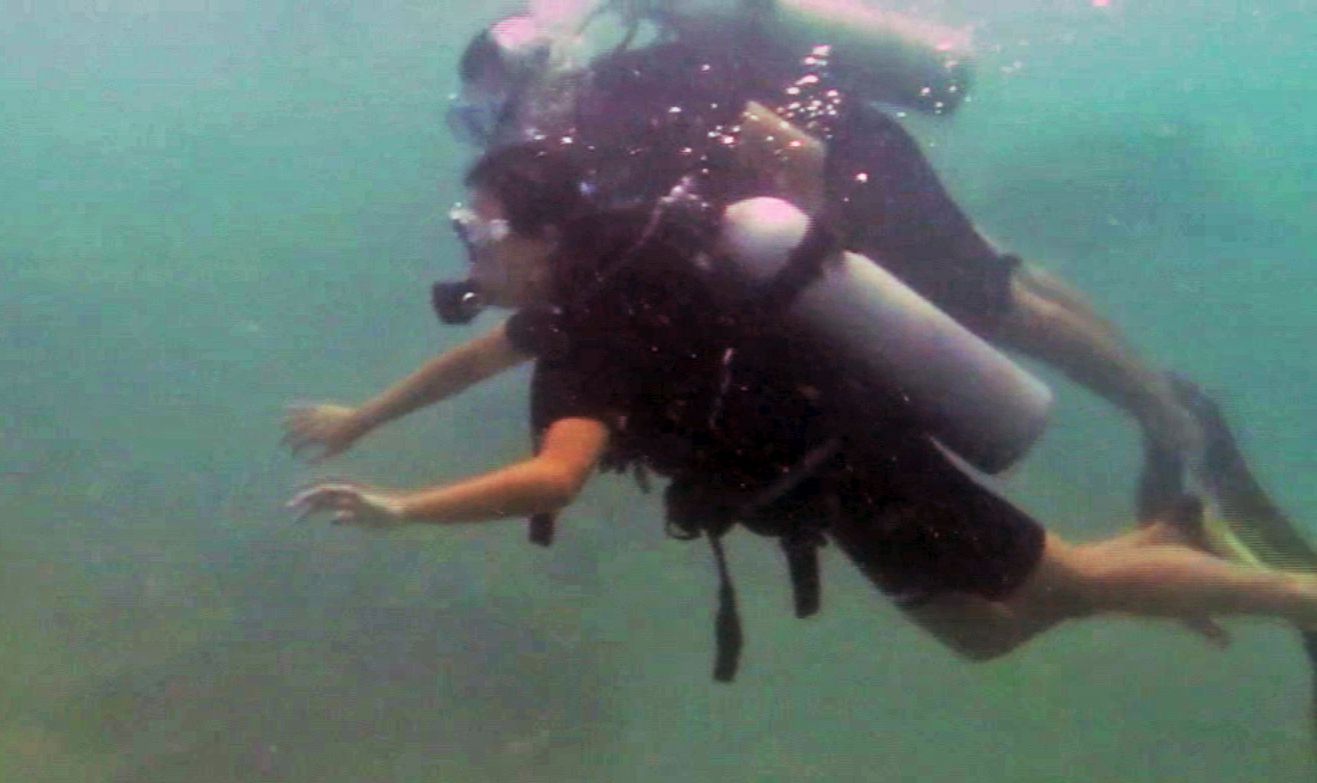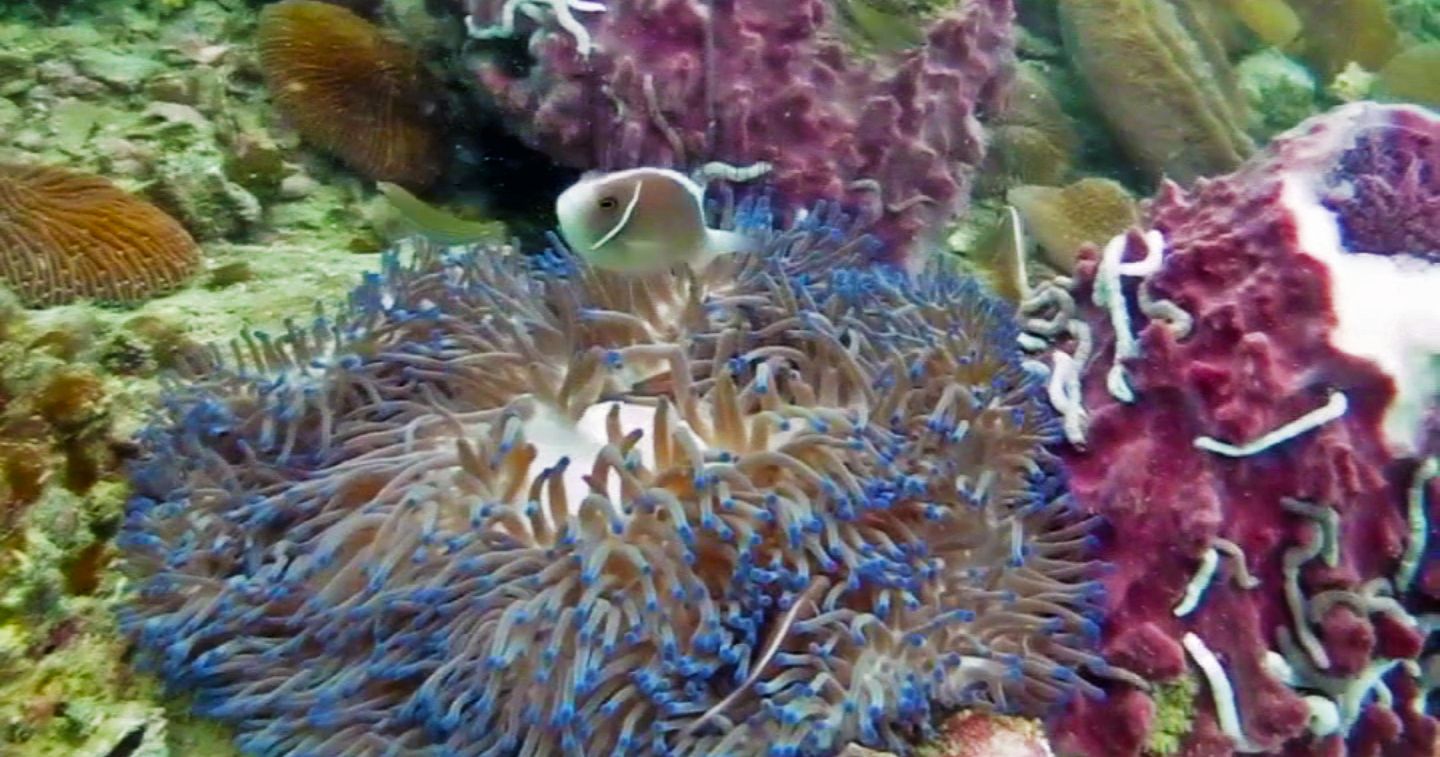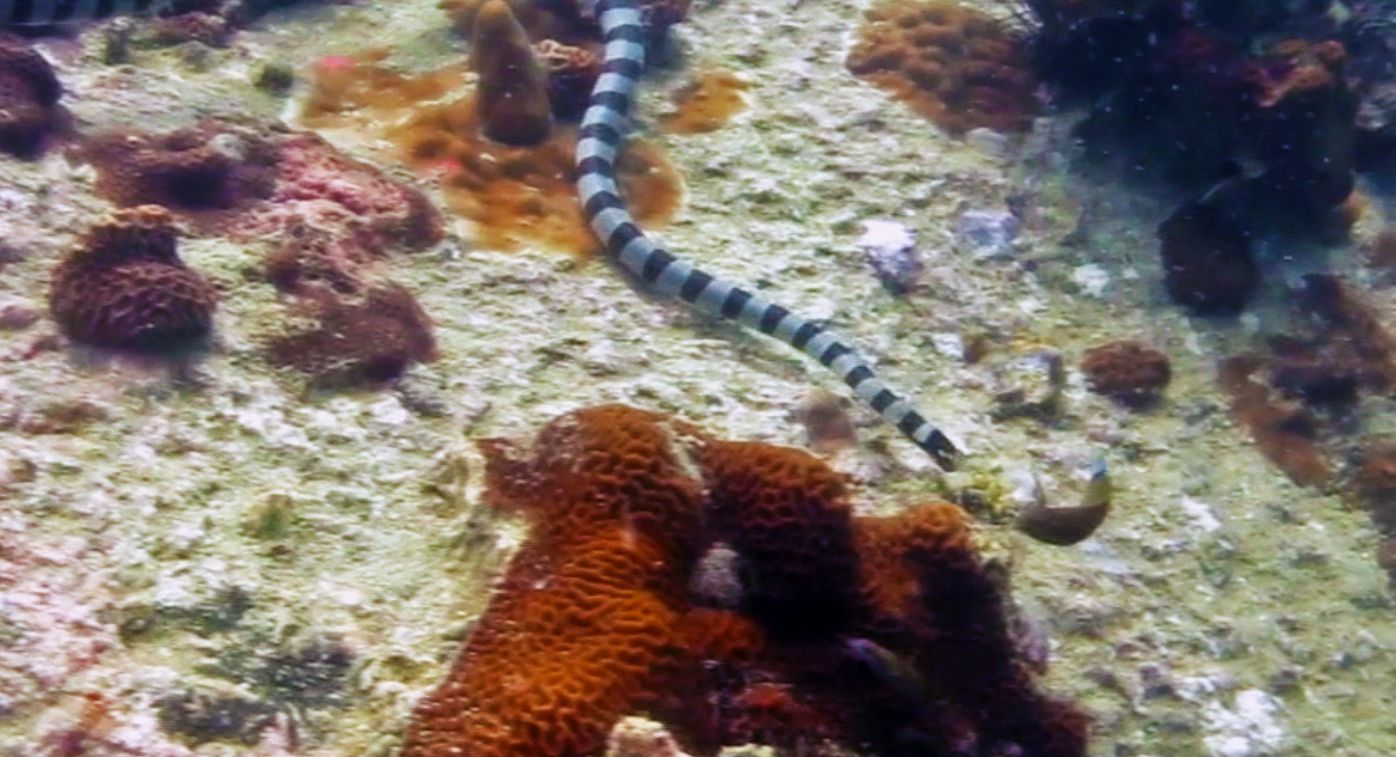Since before our trip started, both Julie and I knew that at some point we wanted to take an open water scuba diving course. With such an incredible diversity of dive sites in Asia, we couldn’t miss the opportunity to explore this region of the world, both above and below water. The idyllic islands on the east coast of Thailand were the perfect place to learn scuba diving – Koh Tao offered the cheapest courses in the world! This would allow us to dive in so many great places to come on this trip as well as for the rest of our lives.
Picking A Diving School
Koh Tao is Thailand’s acclaimed diving paradise. With over 25 diving sites within easy reach by boat, good weather year round and so many school options, it’s not hard to see why over 20,000 new divers are certified here every year. But with so many school options, ranging from small to big, it can be quite hard to pick a good one from the bunch and we had to do some research, analyzing the availability, prices and school size.
Firstly, we checked the availability with several schools, as we wanted to start our course on Christmas Day. It turned out that all of them were closed that day and we rearranged our schedule to start on the 27th instead. Secondly, the prices for a PADI Open Water course were very similar at the time we quoted, around THB 9,800 or USD 306 per person. This included four nights accommodation (the course took 3 days), all dives, equipment, and manuals for the course.
We chose Simple Life Divers, a mid-sized school, where we had a small group (typical of a small school) with the structure of a bigger school. Our group only had four people per instructor, which gave each diver enough attention throughout the course. The school was dependable, with good facilities, equipment and schedule. We had a great time with Simple Life!

Theory Class & Pool Practice
We arrived by ferry to Koh Tao from Koh Phangan. Simple Life arranged for pickup from the pier and we checked in, filling out all the necessary forms and getting our room key, so we were ready to start the course the next morning. At 9am the next day, we began with PADI educational videos explaining the theory behind scuba diving, good practices and safety procedures. To be honest, the videos were kind of long and boring, but it was important learn key diving concepts. Plus it was part of the PADI certification program and unavoidable. We took notes for the final theoretical exam on the last day of course.
After lunch, we came back to the school and were introduced to the diving equipment, consisting of a 14L tank (with pressurized air), a Buoyancy Control Device (BCD to control buoyancy) and regulators (to breathe and inflate our BCDs). We learned each individual part and how to set everything up. Then each of us were suited up with individualized wetsuits, masks, fins and weight belts. Off to the pool!
In the beginning, breathing underwater was such a strange feeling. We had to constantly remind ourselves to keep breathing (most important rule of diving!), which was against our natural instinct of holding our breath underwater. Our senses were confused too as things looked closer and bigger than they actually were and it was very hard to identify where a sound was coming from. However, after some time we got used to it and breathing became second nature, as it should be. At that point, we started practicing a few basic skills, like regulator recovery, clearing our masks or using an alternate source of air, just to name a few. It was good that we first practiced in the pool. None of the skills were difficult or particularly challenging, but I can see how it could be scary to take away the breathing source while being underwater in the open sea on the first day.
With the initial basic skills covered, we moved on to more challenging, buoyancy control techniques. These usually involved ascending, descending or maintaining the same level through the use of our BCDs as well as just using the air in our lungs. It proved to be quite hard to achieve in the first few tries. I would either hit the bottom of the pool really fast or skyrocket up to the surface, but with time I managed to somewhat control my buoyancy. There was still much room for improvement.
The last skill we trained was the emergency ascent with an alternate air source, where I was designated to be out of air and had to use Julie’s alternate regulator. I sent Julie the out of air signal, grabbed her alternate regulator, clearing out any residue water, and took a deep breath in. So far so good. However, the second time I tried to breathe, I got a mouthful of water instead. I cleared the regulator again, took a deep breath in and the same thing happened, until we realized there was a big cut on the mouthpiece and it was getting flooded with water. I reached for my regulator again and we ended the training. While this may sound like a bad experience, I actually think it was good exposure to problems that can happen underwater and it definitely trained me to remain calm even without any air source. That’s precisely why we had so much training before actually diving in the open water. Plus we learned to check our equipment more carefully.
First day of the course was over and we were on our way to becoming divers!
Shallow Water Dives
The second day started a bit earlier, at 8am, and we again headed for the classroom to finish the videos and the theoretical lessons. The last section of video was pretty much a sales pitch offering other PADI advanced courses and specialties which could have been skipped entirely. What we really wanted was to go for some real diving.
I was a bit apprehensive for the first dive, mostly because I had a bad experience a few years ago during a discover scuba diving session in Brazil. Discover scuba dives are usually meant for newcomers to try out scuba diving, but they obviously don’t train you nearly as extensively we were trained on the first day with essential basic skills. During my discover scuba dives, I remember feeling completely lost underwater. Breathing wasn’t second nature, my mask constantly flooded and I didn’t know how to properly equalize the pressure in my ears which caused terrible ear pain. I expected this time to be different, as I felt way more prepared after training in the pool.
In the afternoon, we picked up our equipment, boarded the Simple Life boat and headed for our first dive site, Twins. During the ride, we set up all of our equipment. As soon as we reached the dive site, we jumped in with all of diving gear and signaled to go down together. The descent was slow and easy (no equalization problems this time!) and we soon hit the bottom at 6m, where we kneeled in a circle and practiced some of the skills we learned in the pool the day before. With the formalities of the course over with, we were off to explore the dive site itself.

As we swam through the corals, slowly reaching 12m below the surface at one point (though we didn’t even notice!), we spotted many foreign creatures that varied in size and shape. I now understood why they say you can see more wildlife in a few minutes underwater than an hour spent elsewhere. We were constantly pointing out new fish or corals to each other, it was an amazing feeling of discovery. A whole new world that had been under our noses this whole time suddenly emerged in an incredible display of diversity and colors. It was magical and exhilarating and beyond beautiful down there. Our total dive time was only 38 min, but it was long enough to go around the two underwater pinnacles (hence the name Twins) that created a beautiful reef with plenty of marine wildlife.

We came back to the surface and could barely hold our breath from the excitement we had just experienced, and that was only our first dive! Back on the boat, we headed for our second dive of the day, this time at Sairee Reef. After the first dive, we couldn’t wait to get underwater again and explore more of this new world we had only just discovered. We also felt more comfortable and confident the second time, as we knew what to expect.

Similar to the first dive, we descended and kneeled on the sandy bottom to practice some skills before we could explore the site. The bottom depth was only 7.6m this time, which improved visibility significantly. Exploring the site was harder though, since the corals were scattered throughout the flat bottom of the sea. Nonetheless, it was still very interesting and looked totally different than the site at Twins, with different corals and fish. We saw groups of fish dancing and playing with each other. The highlight of the dive was an angel fish with glowing blue stripes that swam close to us. I had never seen such a vibrant blue.

After 40 minutes, we headed back to the boat to end our day. It was an incredible first experience and we loved all of it – hanging out with other divers on the boat, exploring the reefs and playing with the fish. We couldn’t wait for the next day.

“Deep” Water Dives
We had two more dives in the morning of the last day of course, this time in deeper water. We took the boat at around 7:30am and headed to White Rock, our first dive site at 14.2m depth. White Rock referred to the huge underwater pinnacle that was visible above water. It was by far the most interesting and beautiful site we visited in Koh Tao. No matter where we looked, we were guaranteed to spot some spectacular wildlife or some breathtaking coral. At times it was hard to believe my eyes, it was unlike anything I had ever seen. Instead of pointing out everything to each other like the first day, we both just tried to take in as much as we could. There wasn’t enough time and we didn’t have enough eyes to enjoy it all.

We were sad to end this dive, as we could have spent hours and hours there just marveling at the beauty of the reef. I’m sure we’ll be talking about White Rock for many months to come. Our last and deepest dive site for the course was Hin Pee Wee.

With a bottom depth of 18m, Hin Pee Wee was also home to a shipwreck which was pretty cool. Unfortunately, visibility wasn’t great and we could only see 3-5m away, which made the experience at this site the worst compared to the previous three dives. We didn’t even see the shipwreck, which was a disappointment, but we did spot a few interesting fish and even a sea krait was around!

After four dives with a maximum depth of 18m, we were officially done with the practical part of the course. The final theoretical exam in the afternoon was easy and chill. After some final paperwork, we received logbooks that had records of every dive where we will continue to record details of dives to come. That night, we all gathered at the Simple Life bar to watch a video of our dives (thanks Michael!) and celebrate with our fellow newly graduated PADI Open Water Divers!
This course and experience holds a special place in our hearts. Both Julie and I had an amazing time learning how to dive with Simple Life Divers in Koh Tao and we miss our time on that tiny little island. It was a great place to meet new people, relax on an idyllic island and explore a whole new underwater world. Now not only do we have countries to visit and sites to see, we have underwater destinations to explore.

For more pictures from our diving course in Koh Tao, please visit the gallery! All diving photos were stills taken from a video of our diving experience courtesy of Michael Luff. Thanks Michael for the great video and for recording such great memories!

